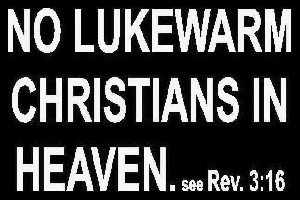Thyatira is the fourth of the seven churches addressed in letters in Chapters 2 & 3 in the Book of Revelation. As the world would see it, Thyatira would have been the least significant of the seven cities, yet it received the longest of the seven letters.
Thyatira’s founding and strategic importance
Following the death of Alexander the Great, his empire was broken into four parts, each ruled by one of his generals. One of these, Seleucus I, established the state of Pergamum in 282 BCE. Thyatira, which means “the citadel or fortress of Thya’, was built as a first line of defense for the larger cities of Ephesus and Pergamum further to the west. The city itself would not have been worth fighting for. Instead, it was garrisoned by guerrilla type forces who would fight a delaying action while the western cities prepared to defend themselves against any invading force. Archaeological evidence shows that the city changed hands between Pergamean and Syrian rule. Thyatira, therefore, did not grow like the western cities.
Thyatira fell to the Romans in 190 BCE and became first part of the Pergamean Kingdom and then part of the province of Asia. In 133 BCE, the king of Pergamum willed his kingdom to Rome. What followed was an era of peace and prosperity.
Thyatira’s commerce and trade
Under Roman control, Thyatira derived its strength and wealth from being in a central place for communications. Archaeology has turned up many Thyatiran coins indicating a thriving commercial system. The city was also a thriving center of manufacturing things such as wool, linen, leather and bronze; also potters, tanners, bakers, slavers and dyers. Thyatira was also a producer of “purple dye,” highly valued by royalty. While the purple dye of the western cities came from oysters, the Thyatrian dyes came from a purple flower, producing a unique dye that was a bit redder than the others.
Lydia, one of the Apostle Paul’s first gentile converts to Christianity, came from Thyatira:
| One of those listening was a woman from the city of Thyatira named Lydia, a dealer in purple cloth. She was a worshiper of God. The Lord opened her heart to respond to Pauls message. (acts 16:140 |
Guilds
Guilds were associations of craftsmen who banded together to both protect and expand their particular craft. There were more guilds in Thyatira than in any other city in the area. They served a number of different commercial purposes.
First, they protected the skill and knowledge of the particular craft. The technology of producing purple dye, for example, was closely protected within the guild.
Second, they protected their markets. Different guilds formed alliances with one another and would trade only with those belonging to their “brother” guilds. Those who were not in a guild had no chance of developing a market for their trade.
Third, each guild also had a “patron” pagan god. A very active social practice was to hold festivals, often drunken affairs and even orgies, to celebrate these gods. It was truly a “good time at the guild hall.”
This presented a huge problem for Christians. In order to succeed as a craftsman, they had to belong to a guild. But belonging to a guild meant worshiping pagan gods and engaging in sexual immorality. These, along with eating foods sacrificed to pagan gods, were the complaints the Spirit waged against the church at Thyatira.
The significance of this and the letter addressed to Thyatira in Revelation will be explored in another blog in The Revelation Study Series.
Shalom, Art 
Alive in The Word
Addendum:
Ancient Thyatira is the modern Turkish city of Akhisar, which means “white castle.” (No, not from the hamburger joint, but the fortress built there in 290 BCE)
The city is believed to be Greek in its origins, not Phoenician. It lies some 50 Miles (80 km) from the Mediterranean Sea. The “purple dye” manufactured there was from plants, not the shell-fish used by the Phoenicians.
Guilds probably did not originate there, but because of the wide variety of trades practiced there Thyatira had more guilds than any other city in the Roman Asia province. This proved to be a tremendous challenge to Christians in the city. This is addressed in the letter to the church in Thyatira in Revelation 2. I’ll speak more to this in a blog in the Revelation Series.
Paul met Lydia while in Philippi, but she was from Thyatira. This demonstrates that women could hold important business positions in Thyatira. Lydia would almost certainly have been associated in some way with the dyers guild in order to be a business success.
It is possible that Paul and Silas visited Thyatira during Paul’s second and/or third journeys, although this is not certain. They are known to have visited several smaller cities in the area during these journies.

This blog is part of an ongoing series based on my notes from a weekly Bible Study. For all of the blogs in this study, see: A Study of the Book of Revelation: Index of Blogs
Shalom, Art 












